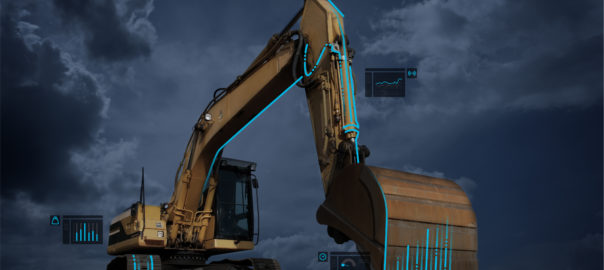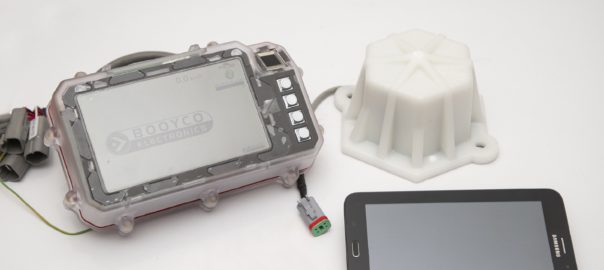In an article arguing proximity detection and collision awareness technology makes for not only a safer, but more productive mine, Craig Hoffmann, Senior Product Manager – Collision Awareness & Geospatial Systems at Wabtec Corp’s Digital Mine division, has revealed that the company is currently working on conducting single and multiple machine testing on a production mine site using its collision awareness system.
In an opinion piece titled, Pioneering collision awareness technology enables safer mining practices, Hoffman went into the history of this technology, as well as the milestones the Wabtec team have achieved.
Mining has always been seen as a risky business, whether undertaken above ground or deep beneath the earth’s surface. But, thanks to a combination of government regulation in South Africa and a concerted industry effort by mining companies and original equipment manufacturers (OEMs), further enabled by cutting-edge technology, it’s becoming a lot safer, he writes.
In several respects, South Africa is leading the way in this drive towards the ideal of a mining industry with zero avoidable fatalities. Collision awareness is a crucial component of this quest, contributing to the layers of protection against significant risk associated with vehicle interactions.
A collision awareness system (CAS)* is an integral part of mine safety management tools that helps workers make the right decision at the right time in order to mitigate vehicle interaction risk while helping to increase productivity and improve situational awareness.
The need for a CAS in South Africa was identified as far back as 1995, when the Leon Commission of Inquiry into Safety and Health in the Mining Industry identified haulage and transport accidents as the second largest category of accidents in mines.
The government wasn’t slow to respond. A year later, the Mine Health and Safety Act was enacted, which places the responsibility on employers to ensure mines are safe and workplaces healthy.
At the same time internationally, there was a concerted move towards making interactions between vehicles, vehicles-to-persons and vehicles-to-environment significantly safer. The Earth Moving Equipment Safety Round Table (EMESRT) was established in 2006 by six global mining companies. From the outset, engagement with OEMs was seen as crucial to the success of its efforts.
Since its formation, EMESRT, as part of the Vehicle Interaction Systems Performance Requirements PR-5A, has defined 24 surface vehicle interaction scenarios and established nine levels of vehicle interaction defensive controls, namely: level 1 – site requirements, level 2 – segregation controls, level 3 – operating procedures, level 4 – authority to operate, level 5 – fitness to operate, level 6 – operating compliance, level 7 – operator awareness (proximity awareness – alerts the operator), level 8 – advisory controls (proximity detection – advises the operator) and level 9 – intervention controls (collision avoidance – takes control from the operator). EMESRT has also driven the mining industry development of a standard communications protocol between the proximity detection system (PDS) and OEM machine for the practical implementation of level 9 – intervention controls as part of the standard ISO 21815.
The importance of level 7 – operator awareness and level 9 – intervention controls was highlighted on February 25, 2015 when the South Africa Minister of Mineral Resources signed the Amendment of Chapter 8 of the Mine Health and Safety Act. This legislation makes it necessary to implement a system which provides proximity awareness (level 7) and collision avoidance (level 9), which will automatically apply the brakes to trackless mobile machinery (TMM) without any human intervention at any mine where there is a significant risk of such collisions.
This functionality essentially requires the traditional level 7 PDS to mature to provide full machine interventions of a level 9 collision avoidance system. The final date for implementation is still to be confirmed but the mining industry is targeting late 2020.
The legislation requires that each mining operation conduct a comprehensive risk assessment to determine the risk exposure introduced by TMM. Based on the risk assessment, the mining operation is then able to define a collision management system user requirements specification with regards to CAS required on the TMM fleet.
The need for such measures was underlined when it emerged that fatalities attributable to TMM-related accidents increased nearly 50% from eight in 2016 to 14 in 2017.
Wabtec Digital Mine has been the global provider of a best of breed high integrity level 7 PDS system for the past 14 years and, therefore, was perfectly positioned to take on the journey to progress towards a fully compliant level 9 CAS system. At this level, the PDS automatically applies full intervention controls to the vehicle and takes control from the operator when a dangerous vehicle interaction situation is detected after the operator has failed to respond to the earlier level 7 proximity alerts and level 8 advisory controls.
It is recognised by Wabtec and the mining industry that CAS alone should not be viewed as a ‘silver bullet’ for mitigating the risk of vehicle interactions, as the initial focus should be on maximising the maturity of the more effective mine site defensive controls at levels 1 – 6 and supplemented by PDS/CAS levels 7 – 9 where required. This approach has also been adopted through a new initiative by the International Council on Mining & Minerals (ICMM) as part of the program for ‘Innovation for Cleaner Safer Vehicles’, where the mining industry globally has an ambition at the CEO level to eliminate all fatalities from vehicle interactions in mining by 2025.
The Minerals Council of South Africa is currently coordinating the development and testing of all the CAS suppliers by providing a best practice framework with the aim of fast tracking the industry developments. This work is also being integrated into a new EMESRT initiative to develop a unified, integrated industry PDS testing methodology and validation framework.
Milestones
The first milestone for the CAS supplier is to conduct independent lab scale testing done by the University of Pretoria (UoP) at the Gerotek testing facility, in South Africa. The UoP uses high precision measuring equipment to test and log the performance of the CAS system as is capable of providing a detailed independent report on the capability of the CAS system. The tests provide invaluable insights into the capability of the system and level of technology readiness.
The second milestone, which the Wabtec Digital Mine Collision Awareness System team conducted on an independent machine OEM site, is single and multiple machine testing. These tests were successfully performed, as real-world scenarios were created and tested against. These tests were conducted in dry and wet conditions and to speeds up to 40 km/h.
The third key milestone that the Wabtec team is currently working towards is to conduct single and multiple machine testing on a production mine site. The range of machines being tested include rigid body haul trucks, articulated dump trucks and a rubber-tyred wheel loader, which represent the typical high risk TMM found working on a mine site.
In order to address the significant challenges in achieving a level 9 – compliant CAS system, Wabtec Digital Mine has developed proprietary software algorithms that are able to interpret and anticipate the complex scenarios presented during normal mining operations. This enables the Wabtec systems to operate seamlessly with the operator.
If Wabtec’s experience has shown anything, it’s that proximity detection and collision awareness technology makes for not only a safer, but a more productive mine, thanks to the wealth of data the systems are able to gather, analyse and feed back to the mine operators we support. We remain committed to delivering a world class, Level 9 CAS system to the global mining community.
* “CAS” has been alternately referred to as collision awareness system or collision avoidance system. Wabtec CAS solutions should be understood as collision awareness systems







